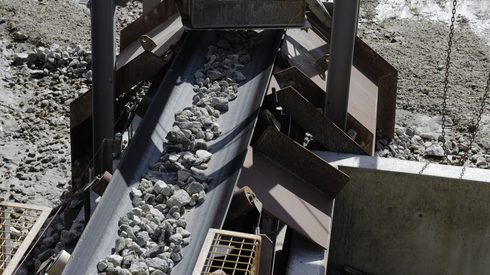The first 100 days of Donald Trump’s second term as president of the US have been marked with tariff announcements and delays that have strained global relations and created market volatility, highlighting Trump’s first 100 days steel tariffs impact on the domestic steel industry, Fastmarkets has heard. A president’s first 100 days are commonly used as a benchmark for the first impression of an administration, and could be a sign of the next four years for the US under Trump.
Trump spoke at a rally in the US state of Michigan on Tuesday April 29 to mark his first 100 days in office, defending the use of tariffs and announcing plans to offer partial tariff rebates to companies that assemble cars in the US.
“We’ve accomplished more in three months than most administrations accomplished in four years or eight years,” he claimed on Tuesday, reflecting on the impact of steel tariffs during Trump’s initial 100 days.
Tariff turmoil
The use of tariffs had been a cornerstone of Trump’s 2016 and 2024 campaigns to gain the presidency, which ultimately saw him impose 25% tariffs on steel and aluminium imports while in office, a measure which gained wide support in the US steel industry.
“President Trump’s signature achievement in the first 100 days is the revision of the Section 232 tariff on imported steel, to close the loopholes that have weakened it over the years,” Philip Bell, president of the Steel Manufacturers Association, told Fastmarkets on Tuesday. “The tariff helps to level the playing field for American steel workers.” The president’s steel tariffs have significantly impacted the industry.
Trump’s Section 232 tariff policy was necessary to curb global excess capacity in steel, Kevin Dempsey, president and chief executive officer of the American Iron and Steel Institute (AISI), said on April 30.
“Looking ahead,” Dempsey said, “the administration recognizes that foreign steel overproduction has led to increased dumping of excess foreign steel production onto world markets, as well as widespread transshipment and diversion of steel from third countries.”
Other steel industry sources, however, believed that the domestic US steel industry has been significantly affected by the uncertainties created by the Trump administration in its first 100 days.
“The Trump administration’s continuing refusal to provide clarity around tariffs has contributed to automotive companies reducing their purchases of steel from domestic steelmakers,” Yong Kwon, senior campaign adviser of the Industrial Transformation Campaign at non-profit organization Sierra Club, told Fastmarkets, pointing out the tariffs impact during Trump’s first 100 days.
“In theory,” Hilary Lewis, steel director at Industrious Labs, said, “tariffs to protect the domestic [US] steel industry can be helpful in protecting jobs and modernizing facilities. However, even with a measured approach to tariffs, we need to pair those policies with direct investment in our antiquated coal-based steel mills.
“The reality of the chaos around both steel industry and automotive industry tariffs,” Lewis added, “is destroying demand and creating an uncertain business environment where it is difficult to see a clear path forward.”
The ripple effect of tariffs on the US steel market
The back-and-forth of Trump’s tariff actions have shaken the domestic steel market, with prices rocketing in March.
Fastmarkets’ calculation of the steel hot-rolled coil index, fob mill US Midwest, averaged $46.80 per hundredweight ($936 per short ton) in March, up by 16.01% from an average of $40.34 per cwt in February and higher by 32.50% from an average of $35.32 per cwt in January.
Steel tariffs impact on strategic buying and market hesitation in Trump’s first 100 days
In the lead up to the date in March when 25% steel tariffs were expected to take effect, some buyers increased their purchasing of material to get ahead of the new levies on steel, while others questioned steel demand and waited for the uncertainty in the market to play out.
“Most people are being very careful on what they buy, with the high prices and uncertainty with tariffs,” a distributor said in mid-March, observing the tariffs’ impact in Trump’s first 100 days.
“My company has been very busy,” a second distributor told Fastmarkets in late February. “Customers are panic-buying and speculating on higher prices due to the announcement of tariffs. It seems the mills have all closed their books for March, and some have not opened for April yet.”
Trump’s tariff policy could curb growth
Looking ahead, certain sectors in the steel industry may be negatively affected by the current president’s tariff policies.
“We’ll see downstream customers of steel and aluminium, such as the construction and manufacturing sectors, with increased costs in purchasing which could stifle their overall growth,” Samir Kapadia, managing principal at the Vogel Group, told Fastmarkets, regarding the impact of Trump’s steel tariffs in the first 100 days.
On a global scale, Trump’s tariff policies were expected to slow global economic growth, the Organization for Economic Co-operation and Development (OECD) found in March.
But the slowdown in downstream sectors could be short-lived, Kapadia added, highlighting the Trump administration’s new tax policy to subsidize those industries.
“There also might be a wave of new investment announcements from countries such as South Korea, Mexico, Brazil, India and others into the US steel market, as part of deals to alleviate reciprocal tariffs,” Kapadia said.
In April, South Korean steelmaker POSCO agreed a $5.8 billion investment in automotive producer Hyundai’s electric-arc furnace (EAF) steel mill in the US state of Louisiana, expected to begin production in 2029.
Want to learn more? At Fastmarkets, we offer price data, forecasting and analysis on key commodities in the electric vehicle sector. Speak to one of our experts to learn more today.






